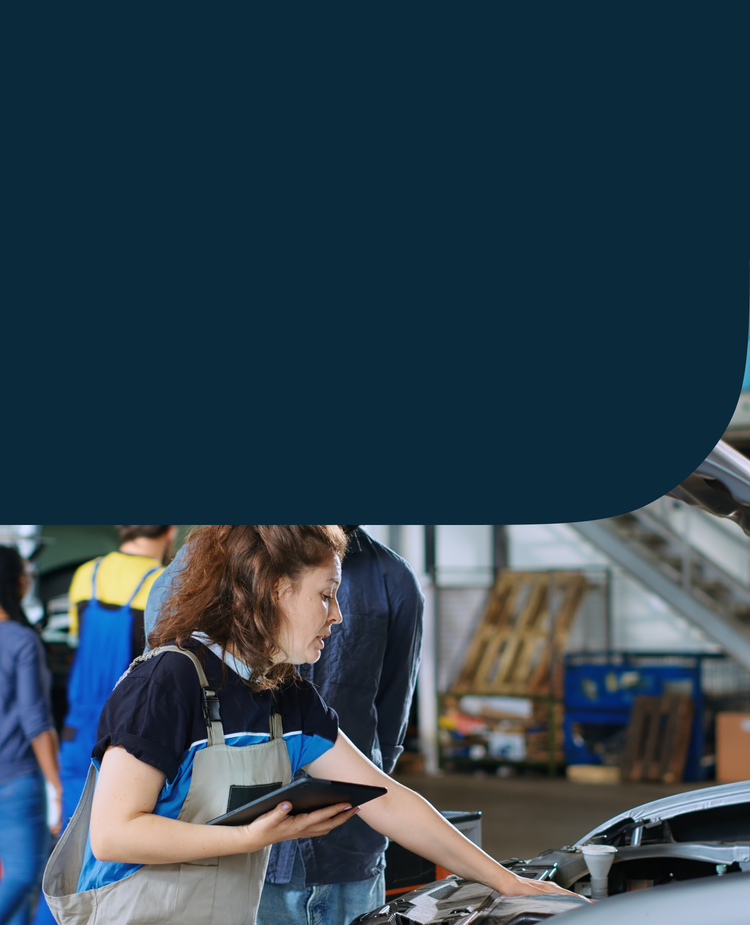
top, right

Top, right

Used Car Reconditioning: 5 Ways to Improve Efficiency and Profitability
Used car reconditioning is one of the most critical processes in a dealership’s operation. A well-structured reconditioning process improves vehicle quality, speeds up inventory turnover, and increases profitability.
Here’s how you can refine your reconditioning efforts to improve turnaround time and boost customer satisfaction:
Build a dedicated reconditioning team
Reconditioning must be treated as an operation, not something squeezed in between customer service jobs.
An effective reconditioning team should include:
- Technicians focused solely on reconditioning
- A process-oriented advisor to oversee workflow
- Porters to handle vehicle movement
- A reconditioning manager to coordinate operations
A general rule of thumb is to hire one technician per 10-12 vehicle sales per month. This practice ensures vehicles move quickly through the process while maintaining high standards.
Establish a written reconditioning checklist
Standardize the reconditioning process with a comprehensive checklist that helps with consistency, ensuring every vehicle undergoes the same thorough inspection, repair, and detailing process.
Your checklist should include:
- An initial inspection to assess vehicle condition and identify necessary repairs
- Mechanical and safety repairs to ensure roadworthiness
- Cosmetic improvements such as paint touch-ups, dent removal, and interior repairs
- Professional detailing to enhance appeal
Having a written checklist helps reduce human error, speed up decision-making, and maintain quality across the board.
Know which vehicles sell and prioritize them
Not all used cars are equal in terms of demand and profitability. Therefore, your dealership should be strategic about which vehicles to recondition.
- Analyze your sales data to identify the top-performing makes and models
- Use tools like a top 25 sellers report to see which vehicles move quickly and generate the best margins
- Consider key metrics such as average profit per sale, portfolio profit potential, and mileage trends
By focusing on high-demand vehicles, you can reduce holding costs and maximize profitability.
Optimize the reconditioning workflow
Improving the workflow can help cut down turnaround time and get cars on the lot faster.
Here’s how to speed up the process:
- Set an auto-approval system for repairs under a certain cost threshold — this eliminates unnecessary waiting time for approvals.
- Use reconditioning management software to track progress, identify inefficiencies, and ensure accountability.
- Implement mobile technology for quick approvals and streamlined communication between departments.
Your dealership’s goal should be a turnaround time of three to five days per vehicle. Anything longer risks sales opportunities.
Calculate holding costs and minimize waste
Understanding your dealership’s daily holding cost is essential for making informed decisions. Every extra day a vehicle spends in reconditioning increases costs and cuts into potential profit.
To maintain profitability:
- Calculate the optimal reconditioning timeframe for your dealership and stick to it.
- Dispose of slow-selling vehicles — if a car isn’t likely to sell on your lot, consider wholesaling it to another dealer.
- Balance technician workloads to prevent bottlenecks and ensure vehicles move efficiently through the process.
A well-run reconditioning process keeps inventory fresh, reduces depreciation, and prevents vehicles from sitting too long, which leads to “lot rot.”
A better reconditioning process means more sales
Reconditioning used cars is more than a necessary step. It’s an opportunity to increase vehicle value, speed up inventory turnover, and drive customer satisfaction.
By assembling a dedicated team, standardizing processes, and optimizing workflow, your dealership can gain a competitive edge by consistently having a pipeline of quality vehicles to sell.
For another proven way to move vehicles off your lot, join the Credit Acceptance dealer network. You’ll gain access to flexible financing options that will help you approve more buyers.